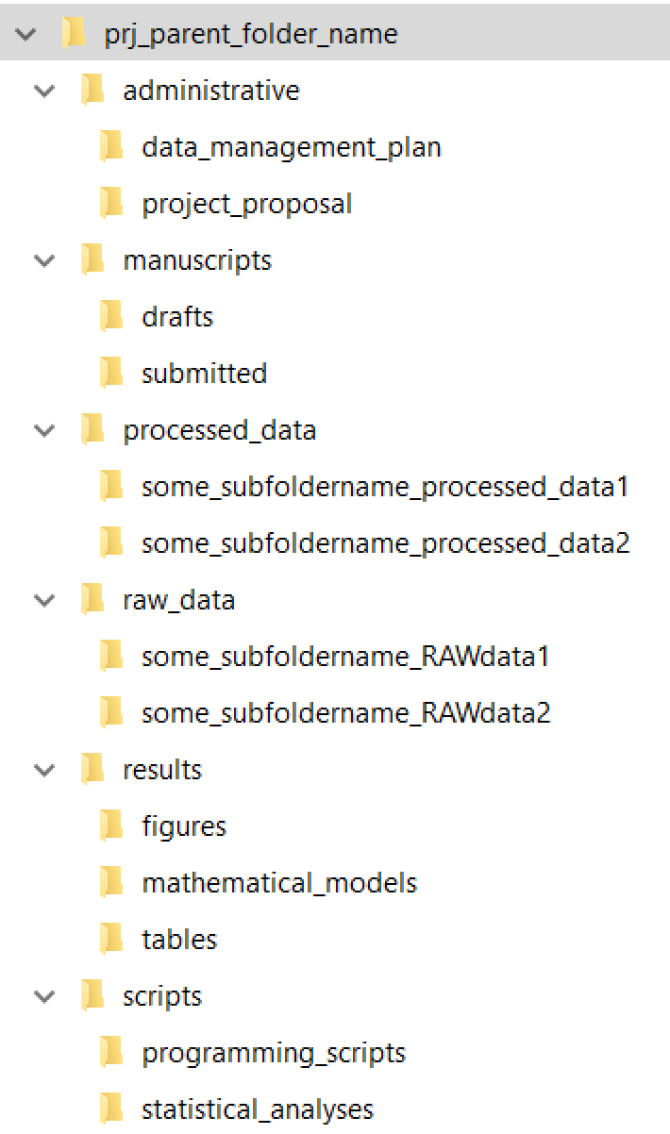Organising files and folders
Designing a logical folder structure and consistently applying descriptive file names over time ensures that you and fellow researchers can easily locate data now and in the future.
Folder structure
The following are some tips on creating a logical folder structure:
- Check whether research group level procedures for structuring folders exist
- Consistently apply the structure and naming scheme once developed
- Start with a limited number of folders and create more specific folders within, but do not use more than 5 levels of folders.
You may set up a clear folder structure by:
- Data type (text, images, models, etc.)
- Time (year, month, session, etc.)
- Project title
- Experimental run
- Subject under investigation
- Step in the research process
- ... etcetera.
A basic example of a folder structure is:

File naming
- identify the content of a (data)file without opening it
- easily and quickly locate, retrieve and filter (data)files, even if they have changed folders
- easily sort and browse through your (data)files
- identify missing (data)files
The following are some tips on creating a file naming convention:
- How you want to sort your files.
This can be by
- date: use YYYYMMDD or YYYY-MM-DD, which ensures sorting in chronological order and is the international standard for date notation
- file version: use leading zeros, v01 or v001 (depending on the number of version you expect) instead of v1, for sequential sorting
- or another parameter that is most important to you (e.g. project/experiment name, researcher, data type, method etc.).
2. How to make a descriptive filename.
Think of project/experiment name, researcher, date (range), data type, method etc.
- use abbreviations to avoid very long filenames
- document the abbreviations
- determine what is important for the filename to be identified, e.g. project/experiment name, researcher, data (range), data type, method, subject of file, etc.).
3. Avoid special characters and spaces.
Do not use spaces or characters such as #$^&()+=?\/!@*%{}[]<>
etc., because some software programs don't recognise file names with these
characters or become problematic to import. Instead, use dashes and underscores
where required.
Avoid ambiguous file naming. Files should be identifiable by themselves allowing you to quickly see where the file should belong to if accidentally misplaced. This could be done by, for example, adding a project abbreviation.
A basic example of a file naming convention is:
[project]_[filesubject]_[subsubject]_[date]_[version].[extension]
Support
For PhD candidates and postdocs, the Graduate Schools offer a Research Data Management course, which is organised by WUR Library and given four times a year. This course covers various aspects of data management, among which how to organise your files and folders. If you have questions or if you would like to get feedback on your folder structure and file naming, contact data@wur.nl.